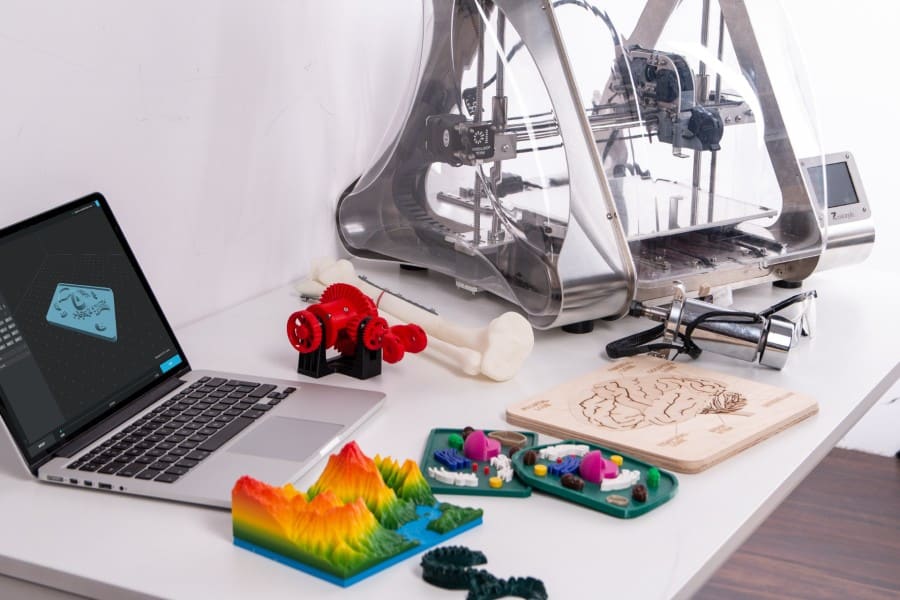
We are a reader-supported education publication. When you buy through links on our site, we may earn an affiliate commission to help us keep providing content.
Big developments in technology — like virtual reality and artificial intelligence — send out shockwaves that touch every aspect of our lives. Education is no exception. Classrooms are both higher-tech and more connected than ever, and new advances are being developed every day. As more tech moves into schools, educators need to be aware of the latest developments they can use to best educate their students.
All educators should understand these four emerging technologies.
1. AI and Adaptive Learning
Adaptive learning is both a technology and a philosophical approach to teaching. The core idea is that students learn at different paces and have various strengths and weaknesses. Ideally, an educator could build a personalized course that fits the needs of each student. However, long-term, one-on-one mentorship isn’t possible in most settings.
Adaptive learning uses artificial intelligence (AI) technology to create a personalized course or curriculum for every student. As a result, they get more help where they need it and less where they don’t.
The focus is on proficiency rather than seat time. Ideally, adaptive learning results in shaping students with mastery of the course material without necessarily needing to spend the same amount of time as every other student.
The technology is still in development, but there are already a few different companies working to bring adaptive learning to classrooms.
2. 3D Printing
3D printers — which build objects from digital models — are being used in engineering and design classes to teach students how to use computer-assisted design (CAD) software. They get to produce a creation they can hold in their hands.

The cost of a 3D printer might be prohibitive to some educators — even the cheapest models can cost nearly $200. Outfitting a classroom with enough printers for 20 or 30 students may not always be possible. However, prices aren’t guaranteed to stay high forever — 3D printers cost around $20,000 in 2010, just nine years ago. In the future, they might be still more affordable for educators.
3. VR and Virtual Laboratories
2D representations aren’t always accurate in certain subjects, such as chemistry. Sadly, 3D can be difficult to implement into the curriculum.
Scientific education at any level wouldn’t be complete without hands-on, experimental learning — which has been an obstacle for online science and engineering courses at all levels. Even in-person classrooms can struggle with outfitting their laboratories. Labs for classes like chemistry, biology and engineering — especially at the high school and college levels — need large amounts of expensive equipment and reagents. Some schools just can’t afford the equipment their students need.
Virtual and remote laboratories have been around for nearly 20 years, but haven’t become especially popular among educators in that time — partly because the technology was unable to approximate the lab experience. However, new advances in virtual reality (VR) technology may make these labs an effective classroom tool.
Companies like Labster are experimenting with simulated labs that use VR technology. Students put on a headset and are transported to a virtual laboratory, where they can complete experiments that provide hands-on lessons about acids and bases or how neurotoxins affect nerves. Arizona State University is already using the technology in an online-only biology course. In some cases, these VR labs can be even better than the real thing — in virtual reality, it’s not a huge deal when students cause explosions.

4. 5G
5G is the fifth generation of cellular network technology and will replace 4G. It will improve mobile speeds by a factor of 20, resulting in a latency of less than one millisecond. 5G is slowly rolling out across the United States this year, but only newer devices will be able to support the technology.
What 5G will mean for education isn’t quite clear yet. However, improved wireless speeds and better connectivity could be a big benefit for students that depend on virtual resources. Educators could provide lessons in real-time or give demonstrations using remotely controlled Internet of Things (IoT) devices. Streaming video and web content will be both faster and higher quality.
Emerging Tech in the Classroom
Virtual reality and AI are poised to make big changes to almost every aspect of our lives, and education probably won’t be an exception. We can’t know right now how widely adopted these technologies will be. If you’ve been following technology trends in education for long, you know it’s rare for new education technology to revolutionize teaching.
However, classrooms over the last few years have trended toward being better connected and more advanced technologically. All educators should keep an eye on innovations like VR, AI and 5G — and be prepared for a school system that’s higher-tech and more connected than ever before.









